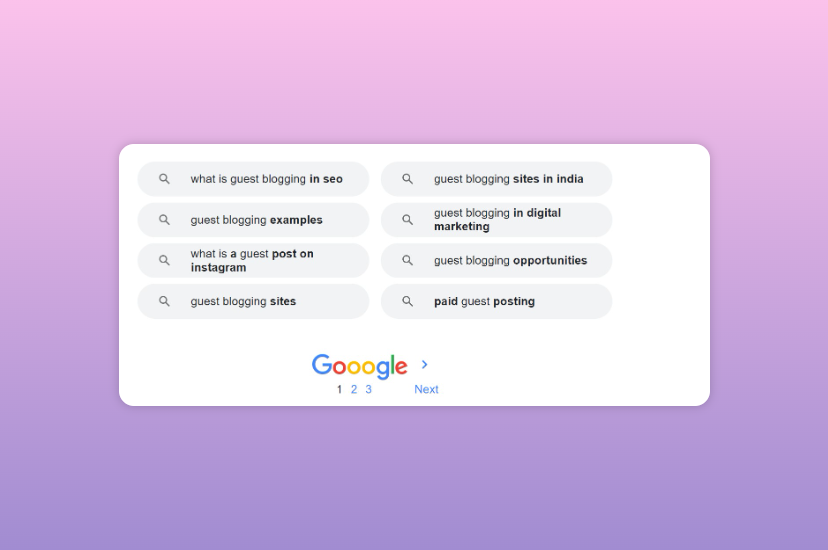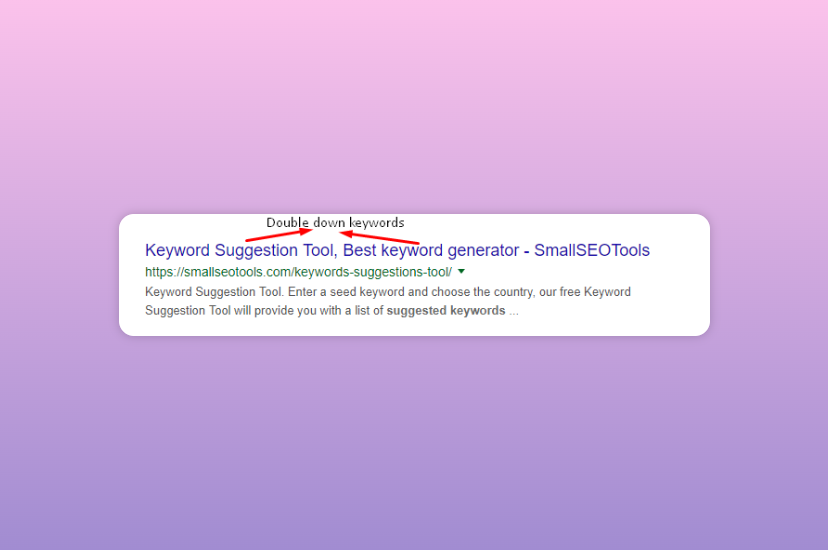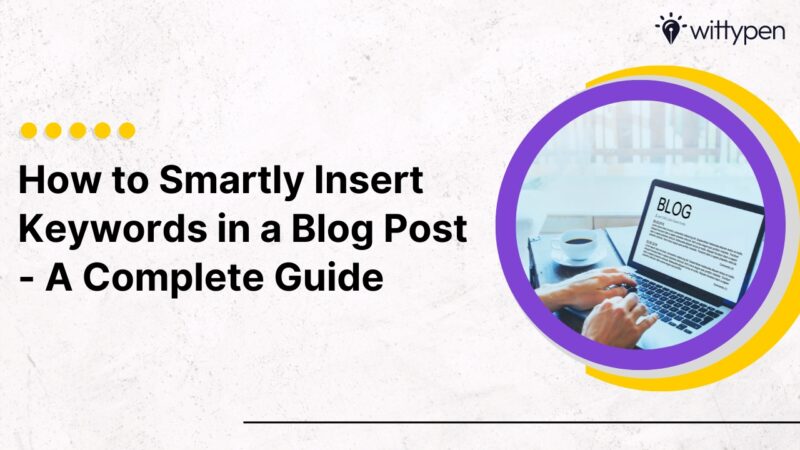Last updated on June 20th, 2024
If you wish to drive more traffic to your website, it is imperative that you implement the right search engine optimisation (SEO) strategies in your blog. Any proactive blogger or digital marketer knows that keywords play a crucial role in boosting a site’s ranking on search engines, such as Google, Yahoo, Bing, etc. However, you cannot insert keywords the way you please.
You have to find relevant keywords and then insert them in different places in your blog. Keep in mind that you should avoid overstuffing keywords because it is a black-hat SEO practice and can get you penalized. If you don’t know the most relevant keywords for your blog content, you can always rely on keyword research tools to find them.
This article will provide a detailed review of how to smartly insert keywords in your blog to help increase its SEO rankings. But first you need to understand what is SEO ranking.
What is SEO Ranking?
SEO ranking refers to the position of a website on search engine results pages (SERPs), determined by various factors like content relevance, user engagement, and keyword optimization. Optimizing these factors improves a website’s visibility and increases its likelihood of appearing at the top of search results.
Understanding and improving your SEO score, which quantifies how well your site adheres to best practices recommended by search engines, is crucial. This score is typically calculated based on aspects like page speed, mobile-friendliness, and the quality of backlinks. By focusing on enhancing your SEO score, you can directly influence your site’s ranking. Regularly monitoring this score allows for real-time adjustments to your SEO strategies, ensuring ongoing optimization and a higher return on investment compared to traditional marketing methods. This proactive approach to SEO not only boosts your site’s visibility but also enhances overall digital marketing effectiveness.
With understanding of how SEO score works, one can proceed with understanding of keywords and how to rank for those keywords.
8 Effective Ways To Insert Keywords In A Blog
1. Insert Keywords in Your Headings and Content
One of the smart ways to insert keywords in a blog is by placing them in your headline and content. When inserting a keyword, you have to make sure that their usage isn’t forced and they fit the bill naturally. Don’t make it seem as if you want your readers to focus on the keywords instead of your content.

To enhance the visibility of your blog on search engine results pages, it is essential to incorporate keywords strategically within your headings and subheadings, specifically using the <h1>, <h2>, and <h3> HTML tags.
Lets consider the above blog: Only On-Page SEO Guide to Read in 2024. The keyword ‘On-Page SEO’ is very evidently used, multiple time, in the H1, H2 etc and smartly placed wherever possible.
This practice helps search engines discern the subject matter of your content. Ensure that these keywords are integrated seamlessly to maintain the natural flow of your writing.
Additionally, embedding relevant keywords throughout the body of your text is crucial. This not only assists search engines in understanding the context of your blog but also avoids the pitfalls of keyword stuffing. To further optimize your content, consider using Latent Semantic Indexing (LSI) keywords. These variants help prevent penalties from search engines for excessive keyword repetition and broaden the thematic reach of your posts.
When crafting a new blog entry, it is advisable to include pertinent keywords in both the introductory and concluding paragraphs. Search engines prioritize these sections when indexing content, which can significantly enhance your blog’s search rankings.
The overarching objective is to make your content SEO-friendly. Utilizing LSI keywords throughout your articles supports high rankings for a variety of search terms, thereby increasing traffic to your blog and improving its competitive edge in search engine rankings.
2. Image File Names
To boost your blog’s visibility, incorporating relevant keywords into the images you use is crucial. Utilizing alternative text, or “alt text,” for images is a strategic approach that can significantly improve your blog’s search engine rankings.
It’s common to find that images can lead to relevant content during online searches. By applying the same method—optimizing images with appropriate keywords—you can enhance your blog’s search engine visibility.
Additionally, before uploading images to your blog, make sure to optimize each image by including targeted keywords in their file names. This step is essential for improving the SEO potential of your visual content, making it more likely for your images to appear in search results and drive traffic to your site.
3. Title Tags
Before writing your blog post, you spend a significant amount of time coming up with a creative title that will captivate your readers. Why? That’s because the title plays a significant role in your blog posts. It informs users what your content is all about.
As a result, you should ensure to incorporate relevant keywords in your titles. Title tags should have long-tail keywords because they not only help to improve your blog’s SEO rankings but also bring more organic traffic.
Title tags that feature the relevant keywords intrigue people to read your posts and they also help to increase the time spent by viewers on each of your posts. When you’re adding a title tag, you should write terms that are related to the content you post.
Do not try to trick people into reading your content by writing a title that is unrelated to your content. Relevant titles help in retaining loyal readers and they also attract new ones. If you don’t know the most appropriate titles to use for your blog posts, you can always rely on title generating tools to come up with suitable titles.

4. Meta Description
Every blogger or website owner finds it struggling to get their content to rank at the top of the first page of search engines. One of the tactics that can help you achieve that is optimising keywords, and one of the places that you can insert these targeted keywords are in the meta description.
The meta descriptions are short descriptions that appear under each search result that a search engine throws up. They can enhance the click-through rate of your site and that’s why you should ensure to have relevant keywords in the meta descriptions.
Frankly, when people conduct a specific search online, they have to skim through the meta descriptions to ensure that they click on the most relevant results. A well-written description should captivate the users and motivate them to click on your blog.
When writing the meta descriptions, incorporate the right strategies so that you can optimise your content. Including keywords in the descriptions will increase your blog’s rankings and generate more organic traffic. Bloggers use this as an effective digital marketing strategy to ensure that their posts rank on the first page of Google.
5. The URLs
Another way to smartly insert keywords in a blog is to include them in the URL. Why should bloggers do that? It helps users to locate links much easier. Instead of rewriting your URL with numbers and letters, you should rewrite it with a readable content.
People tend to trust links that have readable content that is related to what they were searching for. When writing your URL, you should not only focus on the search engines but also on the users. Inserting keywords in the URL informs the users what your blog post is about, but you shouldn’t stuff them.

6. Blog Post Comments
The majority of blog posts have a comment section, and this is one part that you should not ignore. It can help drive organic traffic to your blog and increase SEO rankings alike. Readers will most likely return to a blog where there is some interaction, and where their questions are answered or responded to.
When you reply to your readers’ comments, you should optimise the keywords. Ensure to incorporate relevant keywords in every comment that you respond to, but don’t fix the terms for the sake of filling them and make that they are as natural as possible. Using long-tail keywords in your blog’s comment section could also help to boost your SEO rankings.
7. Use One or Two Keyword Phrases in Every Blog Post
If you wish to maximize your blog’s traffic using keywords, you should only use one or two keyword phrases per post. You should not add too many keyword phrases because your content may end up not making too much sense.
Too many keywords make your blog post seem out of context and they can make your content look like spam to search engines. You wouldn’t want that now, would you? One or two keyword phrases are enough to generate more traffic to your blog and boost your rankings.
8. Blog Post Labels
Your post labels can also help improve your rankings and bring more traffic to your blog. You should not look at your blog labels as if they are only meant to optimise your posts. You can incorporate targeted keywords in the labels to help optimise your blog posts.
Interestingly, even if you forget to incorporate relevant keywords in your labels, it is possible to rename them to include the relevant terms.

How to Select Better Keywords for Your Blog Posts
Optimising your blog posts using keywords does not simply mean using them strategically with the help of the above practices. You also need to learn how to select better keywords to use. The more relevant the keywords are, the better the chances of your blog gaining more traffic and ranking higher on search engines. Here are some of the skills that come in handy.
Get Keyword Suggestions from the Source
When searching online, using search engines like Google, Yahoo, and Bing is a common practice. Typing a topic into the search bar often prompts the engine to suggest potential matches, which not only streamlines your search but also reveals what keywords and phrases are currently trending or relevant.
This feature of search engines can be leveraged to identify keywords that are pertinent to your blog content. By observing these suggestions, you can refine your keyword strategy to better target your audience.
However, if manually searching for keywords seems too time-consuming or less effective, consider utilizing a keyword research tool. These tools are designed to provide detailed insights into which keywords to focus on. They help determine the relevance of keywords, optimal keyword density, and even suggest the appropriate length of your content to enhance SEO effectiveness.
Using a keyword research tool not only saves time but also assists in finding keywords and phrases that integrate seamlessly with your content, enhancing your blog’s search rankings and driving organic traffic. With numerous keyword research tools available online, selecting one that suits your needs can significantly improve your content strategy.
Ahrefs, Google Analytics, SEMrush, SurferSeo are some of the top tools one can use to get started with keyword research.
Look into Related Searches
Another effective way to find better keywords for your blog is by looking into related searches. Don’t get it wrong, this is not the same as Google Suggest which comes up when you type in related words in the search bar. No.
If you scroll down the search engine, you will find ‘searches related to’ a particular topic that you searched for.

You can use the related search results to select a focus keyword for your blog. You can also use the phrases you see in your blog for semantic search purposes and you can also use the words or phrases to dig deeper to find other relevant keywords.
Rely on Google AdWords Keyword Planner
Google Keyword Planner is an effective tool that bloggers can use to find related keywords or the approximations of the search volume for the terms you type in. The tool is not hard to use, but you have to create an account first.
The tool can be beneficial to your blog because it offers plenty of valuable data. You only need to type in a keyword or a keyword phrase and then Google AdWords Keyword Planner will give you tons of suggestions that it obtains from Google’s database.
Look for the Questions People Ask That Are Related to Your Blog’s Content
When users conduct an online search, they mostly ask questions because they want to find answers to something they are curious about.
Users usually ask the how, the when, and the why of it. Therefore, if you want to be successful in your blog’s keyword planning strategy, then you need to find out the questions your target audience asks.
By discovering the questions, you can tailor your blog posts to answer the most relevant questions. Keep in mind that you’re supposed to answer questions that are related to your topic and ensure to incorporate the keywords so that users can find them.
Read More: 25+ Trending Topic Ideas for Content Writing to Rank #1 on SERPs
Consider Pay-Per-Click Advertising
This might not be a popular option among bloggers, especially those who are just starting up their blogs. Why? Because it is not free. However, it would be wise to consider the option even if you don’t want to. You can consider it as an investment because it will give you clear insights into the keywords that generate the most traffic.
Pay-per-click advertising can give you the actual data concerning high-quality keywords and keyword phrases. When you have a clear grasp of the keywords that generate more organic traffic, you can start incorporating them into your articles. They could help improve your SEO rankings.
Look for Hack Books and Courses
If you would like to know the most relevant keywords that are related to your topic, then you can obtain them from hack books and courses. The online world is filled with plenty of instructors and authors. The books are comprehensive and they have plenty of topics. You can select a topic or two and see keyword ideas that might work for your blog.
Link Your New Blog Posts to Your Old Posts
Another effective strategy is adding old links from your blog to your recent blog posts. As a blogger, you should ensure that you regularly review your old posts to try and find target keywords that you might have used. When you find similar keywords to the new content you’re creating, consider adding the link.
Discover Trends
One of the best things about Google is that it has Google Trends which looks at historical search data to show the searches that users have made over time. You can use the tool to filter searches based on the region, categories, time frame, and much more.
Uncovering the trends can be very helpful, especially to bloggers that create content for the local community. By reviewing the historical data, you can customize your articles to incorporate the keywords that your target audience has looked up most.
Double-Down on Your Keywords
The key to making your blog successful is ensuring that your keywords work for you double time, if not multiple times. What does this mean? It means that you should optimise your blog titles to have numerous keywords or overlapping keyword phrases.

You should conduct your research and find a two or three-keyword phrase related to your topic that demonstrates a high level of search activity. You should then expand it to form a long-tail keyword. Alternatively, you can create an article that focuses on two keyword phrases. That way, you make it easier for search engines and users to locate your content.
Plan Your Keywords Semantically
Keyword planning for your blog should always be done semantically. As Google’s algorithm continues to advance, it has become a semantic search engine. What does this mean? It implies that Google considers the relationship between signifiers in phrases and words in SEO rankings.
When users search for a specific topic on Google, the results displayed will not only indicate the exact word(s) that has/have been typed, but it will also show the results of what it considers relevant to the search conducted.
Therefore, if you wish to optimise your blog posts using keywords, ensure to focus on topics instead of exact phrases. Doing so will rank your blog higher in search engines and it will make it easier for users to find your content.
For easier audit you can check out Wittypen’s On-Page SEO Checker to have a better understanding on what all you can implicate while diving deep in your SEO exercise.
Conclusion
Keywords play a vital role in boosting your blog’s SERP ranking. They also help to generate more traffic, which is what every blogger wishes for. However, you cannot achieve positive results if you fail to employ viable strategies. Your main focus needs to be optimising your blog to search engines.
Search engines will rank blogs with relevant keywords that are well used higher than blogs that omit targeted terms. You may consider implementing some if not all of the strategies mentioned above to generate SEO rankings.










